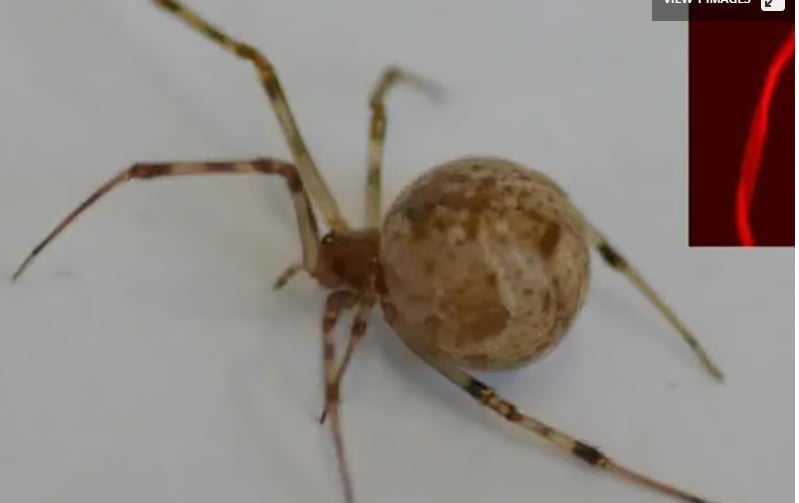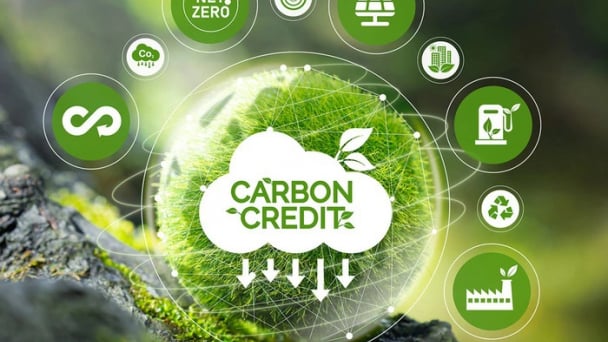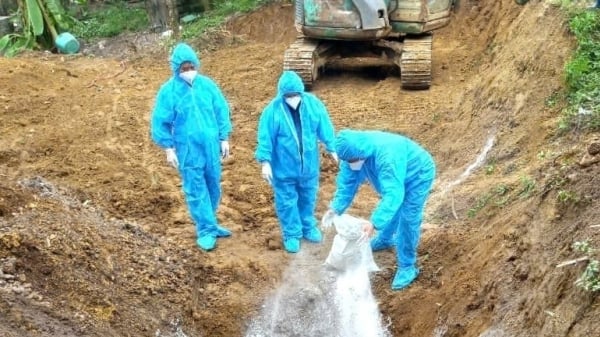July 30, 2025 | 08:47 GMT +7
July 30, 2025 | 08:47 GMT +7
Hotline: 0913.378.918
July 30, 2025 | 08:47 GMT +7
Hotline: 0913.378.918

A red silk gene was added to the spider's genome resulting in it producing a fluorescent colored silk.
With its incredible efficiency, this molecular tool has been applied to plants, animals, and even bacteria. But until now, no one has used CRISPR-Cas9 on spiders.
Researchers at the University of Bayreuth have recently successfully bred the world’s first CRISPR-Cas9-modified spider to produce red fluorescent silk. For this work, they used a species of common house spider (Parasteatoda tepidariorum).
Since many spiders are cannibalistic, with a diverse and complex genome architecture, genetic manipulation and nurturing the resulting offspring poses significant challenges. These factors have left them underrepresented in laboratory research. To overcome these hurdles, the researchers developed a novel CRISPR solution containing the gene sequence for a red fluorescent silk protein and injected it into unfertilized spider eggs.
The microinjection process was no easy task. It involved anesthetizing the spiders with CO2 to prevent movement during the procedure. After recovery, the females were mated with males of the same species. The offspring spun silk infused with a red fluorescent protein, proof that the gene edits had taken hold without altering the silk assembly.
“We have demonstrated, for the first time worldwide, that CRISPR-Cas9 can be used to incorporate a desired sequence into spider silk proteins, thereby enabling the functionalisation of these silk fibres,” says Professor Dr. Thomas Scheibel, senior author on the study.
Spider silk is a fascinating natural fiber, known for its extreme tear resistance, elasticity, light weight, and biodegradability. This successful experiment could open the door to enhanced silk functionalities, expanding its potential in materials science and biotechnology.
“The ability to apply CRISPR gene-editing to spider silk is very promising for materials science research – for example, it could be used to further increase the already high tensile strength of spider silk,” says Scheibel.
Additionally, this study wasn’t focused on weaving colored webs alone. The team also experimented with a process known as CRISPR-KO. Here, the researchers tested the effect of their modifications by "knocking out", or silencing, a gene called "so."
That specific gene was believed to be critical for eye development in spiders, and through the CRISPR-KO process the researchers confirmed this hypothesis. Blocking the so gene led to spiders with no eyes. This offered an advancement in the genetic understanding of this under-studied creature by confirming the role of the gene in the arachnid’s eye formation.
The study has been published in the journal Angewandte Chemie International Edition.
newatlas
![Wood processing for export under EUDR: [3] Adaptive solutions](https://t.ex-cdn.com/nongnghiepmoitruong.vn/608w/files/huyenvt (e)/2025/07/28/5937-1-194314_293.jpg)
(VAN) To resolve bottlenecks and remove difficulties for the exported wood processing industry, the People's Committee of Gia Lai Province has implemented solutions to adapt to EUDR regulations.

(VAN) The Carbon Park initiative aims to establish a model that links green-transitioning businesses, contributing to a transparent and sustainable pathway toward carbon neutrality.
![Wood processing for export under EUDR: [2] Mounting challenges](https://t.ex-cdn.com/nongnghiepmoitruong.vn/608w/files/huytd/2025/07/28/4459-1-155243_758.jpg)
(VAN) More than 54% of planted forest areas lack legality, posing a significant challenge for exported wood processing enterprises in purchasing raw wood for production.
![Wood processing for export under EUDR: [1] Proceeding with concerns](https://t.ex-cdn.com/nongnghiepmoitruong.vn/608w/files/huytd/2025/07/28/3806-2-121505_712.jpg)
(VAN) The EUDR is expected to take effect on December 30, 2025, covering seven commodity groups. Among them, Vietnam is associated with three commodities, including coffee, wood, and rubber.
![Turning seafood by-products into ‘green gold’: [2] Earning billions from seafood waste and leftovers](https://t.ex-cdn.com/nongnghiepmoitruong.vn/608w/files/news/2025/07/19/gfk-29-nongnghiep-142631.jpg)
(VAN) Once thought to be discarded, seafood by-products and waste have been processed and studied by businesses into high-value products, generating billions of dong in revenue.
![Turning seafood by-products into ‘green gold’: [1] Great potential](https://t.ex-cdn.com/nongnghiepmoitruong.vn/608w/files/thanhnb/2025/07/25/5727-bai-1-thu-tien-ty-tu-phe-phu-pham-142336_263.jpg)
(VAN) Utilizing seafood waste and by-products helps increase the value of the production chain, moving toward a green, sustainable agriculture aligned with the circular economy trend.

(VAN) Deputy Minister Phung Duc Tien believes that disease control is crucial in helping the livestock industry achieve the 5.7 - 5.9% growth target in 2025.